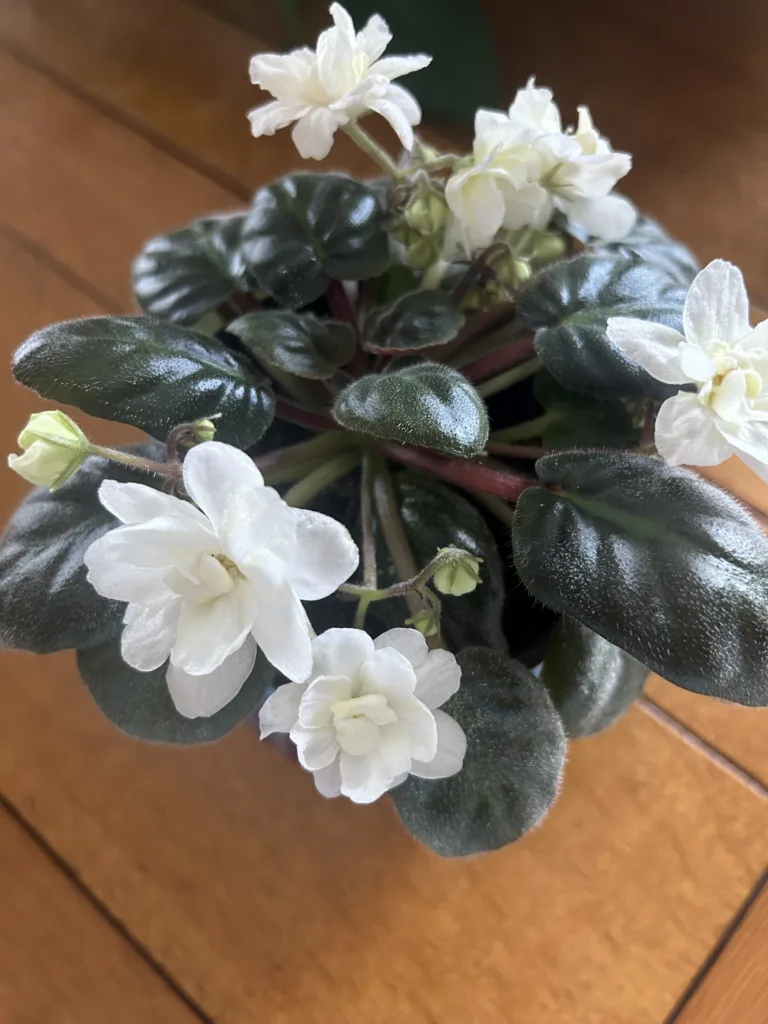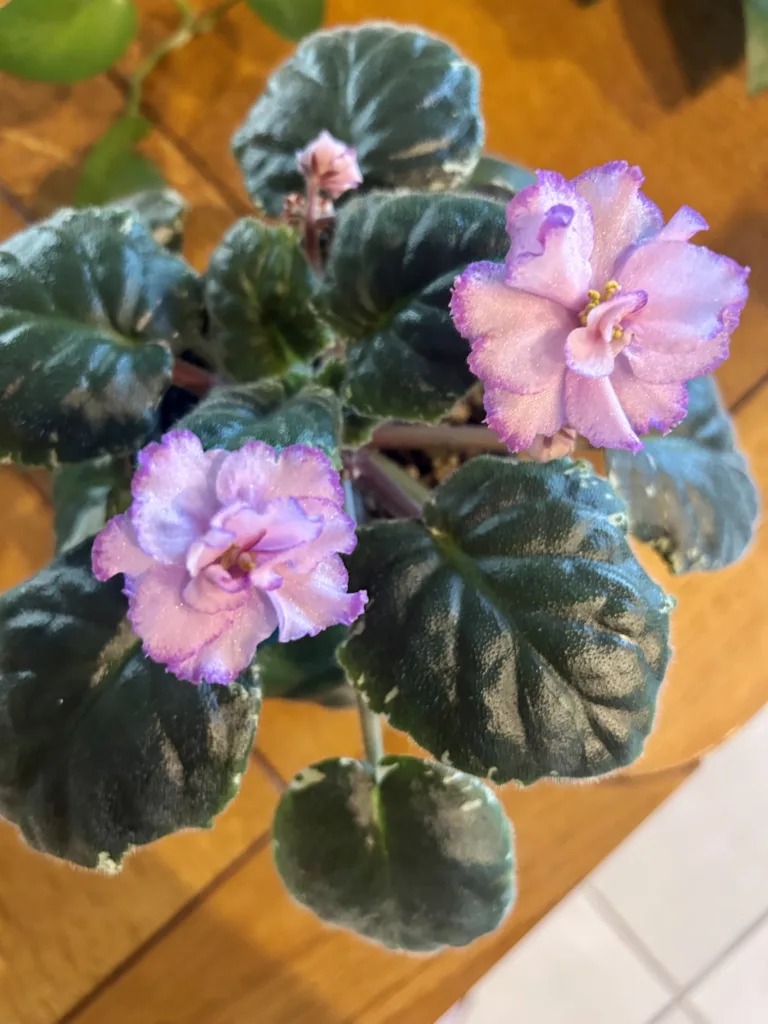African violets are an excellent choice for indoor gardening enthusiasts. Known for their beautiful flowers, they are hardy plants that require minimal maintenance. However, if you want your African violet to thrive, you need to pay attention to the suckers. Suckers are the small plants that sprout out of the base of the African violet, and they can rob the main plant of valuable nutrients. In this blog, we will discuss African violet suckers to help you learn what they are, what is a single crown, and how to remove suckers to ensure your plant grows strong and healthy.
Before we discuss how to remove suckers from African violets, it’s essential to know what they are. Suckers are small offshoots that grow out of the base of the plant. They are technically new plants and will compete with the mother plant for nutrients. If left unattended, they can weaken the primary plant, cause stunted growth, and inhibit the production of flowers. As a result, it is essential to remove these suckers to keep your African violet healthy and blooming.
What are Single Crown African Violets

Now that we understand what suckers are, let’s delve into what a single crown in African violets means. A single crown refers to the main growth center of the African violet plant. It’s from here that the leaves, stems, and flowers originate. Ensuring that your African violet remains a single crown plant is crucial to its health and aesthetic appeal.
Why is this so? A single crown allows the plant to focus its energy into producing vibrant flowers and lush foliage from one central point, giving it a compact, symmetrical and appealing look. When suckers grow, they develop into multiple crowns, diverting the plant’s energy away from the main crown. This diversion can lead to a bushy, unkempt appearance and less vigorous flowering. Therefore, maintaining a single crown in your African violet not only ensures it looks good but also promotes a healthier and more abundant bloom.
Undesirable Crown-The Sucker
An undesirable crown in African violets is referred to as a sucker. The sucker, as we’ve established, is a small plant that starts growing from the base of the parent plant. It may seem harmless at first, but it has the potential to become a serious issue.
A sucker is undesirable because it diverts nutrients and energy from the main crown, which should ideally be the only crown in your African violet for optimal health and aesthetics. The sucker acts as a competitor to the main crown, drawing away resources that could otherwise be used to produce vibrant flowers and lush leaves. It can adversely affect the overall growth and bloom of your African violet. The presence of a sucker can cause the plant to take on a bushy appearance, which is contrary to the desired compact and symmetrical look of a healthy African violet. Therefore, it’s crucial to remove suckers promptly and correctly to maintain the health and beauty of your African violet plant.
Keeping and Repotting Suckers
Despite their potential to harm the parent plant, suckers are not entirely undesirable. In fact, they present a valuable opportunity for propagation. A sucker is a new plant in and of itself, and with proper care, it can be nurtured into a healthy and beautiful African violet.
To repot a sucker, you will first need to carefully remove it from the parent plant. Use clean, sharp scissors to cut as close to the base of the sucker as possible, ensuring not to damage the main plant. Once removed, prepare a small pot with well-draining, African violet-friendly soil. Place your freshly cut sucker into the soil, burying the stem up to the first set of leaves.
After repotting, place the sucker in a warm, brightly lit area, avoiding direct sunlight. Water it carefully, ensuring the soil is damp but not soaked. With consistent care, your new African violet plant will take root and begin to grow, providing you with an additional vibrant and flowering companion in your indoor garden. Remember, propagation through suckers is an easy and cost-effective way to expand your African violet collection and bring more beauty into your home.
Removing Suckers without Repotting Them
If you’re not interested in propagating your African violets but rather want to focus on maintaining a single, robust plant, you can remove suckers without repotting them. Here’s how to do it:
- Identify the sucker: The first step is to identify the sucker, which is usually a small offshoot growing from the base of the parent plant.
- Prepare your tools: Sterilize a pair of sharp scissors or a razor blade. Sterilization is necessary to prevent any infection from spreading to the plant.
- Cut the sucker: Carefully cut the sucker as close to the base as possible, being careful not to damage the main plant. Try to remove as much of the sucker’s stem as you can.
- Monitor the area: Over the next few days, monitor the area where the sucker was removed. If an additional sucker begins to grow in the same place, repeat the process.
By removing suckers without repotting them, you help to ensure that your African violet remains a single crown plant, which is vital for its health and aesthetic appearance. Remember, the goal is to keep the energy focused on the main growth center for a compact, symmetrical look and abundant bloom.
Discouraging Suckers from Forming
While removing suckers is essential for the well-being of your African violet, it’s even better if you can prevent them from forming in the first place. Here are some steps you can take to discourage suckers:
- Proper watering: Overwatering is one of the main causes of sucker formation. Water your African violets only when the top inch of the soil feels dry to the touch.
- Adequate lighting: Maintain a bright but indirect light environment for your plant. Too much or too little light can stress the plant, leading to sucker growth.
- Right temperature: African violets prefer a constant temperature of 70°F – 80°F during the day and slightly cooler at night. Extremes of temperature can trigger sucker formation.
- Prune regularly: Regular pruning helps to maintain a single crown and discourage suckers. Be sure to remove any dead or yellowing leaves to keep your plant in top condition.
- Proper feeding: Use a balanced, soluble fertilizer designed specifically for African violets. Over or underfeeding can result in suckers.
By providing the right conditions and care for your African violet, you can reduce the likelihood of suckers forming and help your plant stay healthy and beautiful.
Happy Gardening!
African violet suckers are a natural occurrence and are essential to a plant’s propagation. However, it is vital to keep the suckers in check and remove them when necessary. By removing suckers, your African violet will grow more robustly with stronger stems and abundant flowers. Remember, removing suckers is a quick and easy task that will ensure your African violet remains healthy and blooming throughout the year.
Please be sure to check out my Gardening Blog Post Page for more tips on all types of gardening. Including Seed Saving, Seed Starting, Orchids, Water Gardening, Coldframe Gardening, Indoor Bulb Gardening, Hydroponics, Container Gardening, Mums, Herbs, African Violets, planting Bulbs, Flower Gardening, Vegetable and Fruit Gardening, Indoor Houseplants of all kinds, Cactus, Succulents, Hanging plants, Deer resistant plants and even Bird, Bee, Butterfly and Hummingbird Gardens!

